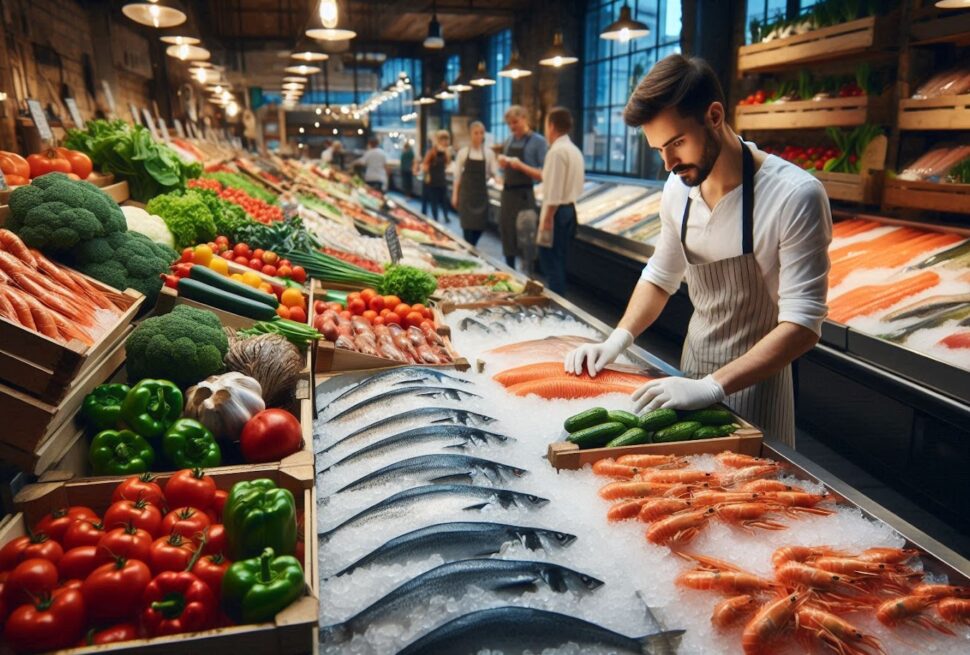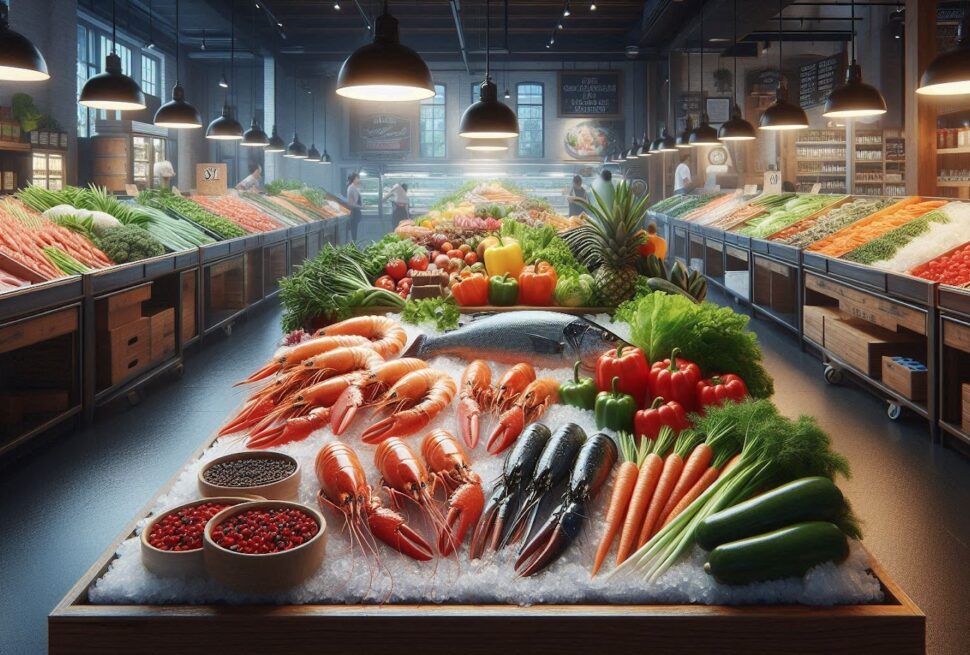Beyond Concrete: Dubai’s Green Residential Revolution
Dubai’s transformation from a desert metropolis to a hub of sustainable living represents a remarkable shift in urban development philosophy. The emergence of eco-friendly residential complexes near organic produce markets signifies a growing awareness of environmental consciousness among residents and developers alike. These innovative housing projects incorporate cutting-edge green technologies while maintaining the luxurious standards Dubai is renowned for. The integration of sustainable practices with modern living has created unique communities where residents can embrace an environmentally conscious lifestyle without compromising comfort.
The architectural landscape of these eco-friendly homes reflects a harmonious blend of traditional Middle Eastern design elements and contemporary sustainable features. Developers have carefully considered the local climate, implementing passive cooling systems and natural ventilation methods that significantly reduce energy consumption. These homes utilize renewable materials and incorporate green spaces that serve both aesthetic and practical purposes, creating microenvironments that contribute to the overall sustainability of the community.
Local authorities have played a crucial role in facilitating this green transformation through progressive policies and incentives. The Dubai Municipality’s stringent building codes now mandate specific environmental standards for new residential developments, particularly those in proximity to organic produce markets. These regulations ensure that sustainable features are not merely superficial additions but fundamental aspects of the construction process. The result is a new generation of homes that set unprecedented standards for environmental responsibility.
The proximity to organic produce markets has become a defining feature of these sustainable communities, creating a symbiotic relationship between residential spaces and local food systems. This strategic positioning reduces transportation-related carbon emissions while promoting healthier lifestyle choices among residents. The markets serve as community hubs, fostering social connections and environmental awareness through various educational programs and community initiatives.
Harvesting Innovation: The Symbiosis of Home and Garden
The integration of urban farming technologies within these eco-friendly developments marks a significant advancement in sustainable living practices. Rooftop gardens and vertical farming systems have become standard features, allowing residents to grow their own organic produce while contributing to the building’s thermal regulation. These agricultural spaces utilize smart irrigation systems that recycle greywater, demonstrating the potential for water conservation in desert environments.
Advanced composting systems have been implemented throughout these communities, creating a closed-loop system where organic waste from homes and nearby markets is converted into nutrient-rich soil. This initiative has significantly reduced waste management costs while providing high-quality compost for community gardens. The success of these systems has inspired neighboring developments to adopt similar practices, creating a ripple effect of sustainable waste management across Dubai.
Innovative greenhouse technologies adapted for the desert climate enable year-round cultivation of various crops. These climate-controlled spaces utilize solar power and smart monitoring systems to maintain optimal growing conditions while minimizing resource consumption. The greenhouses serve as educational facilities where residents can learn about sustainable farming practices and the importance of local food production.
The commitment to sustainable agriculture extends beyond individual homes to community-wide initiatives. Shared garden spaces and communal orchards create opportunities for social interaction while providing fresh, organic produce to residents. These spaces have become focal points for community events and educational programs, strengthening the social fabric of these sustainable neighborhoods.
Smart Solutions: Technology Meets Environmental Stewardship
The implementation of smart home technologies in these eco-friendly residences demonstrates the powerful intersection of innovation and sustainability. Advanced energy management systems monitor and optimize power consumption, allowing residents to track their environmental impact in real-time. These systems learn from usage patterns and automatically adjust settings to maximize efficiency while maintaining comfort levels.
Water conservation technologies play a vital role in these developments, particularly crucial in Dubai’s arid climate. Smart meters and leak detection systems help prevent waste, while greywater recycling systems reduce overall water consumption. Advanced filtration technologies ensure that recycled water meets safety standards for irrigation and non-potable uses, significantly reducing the demand for fresh water resources.
Artificial intelligence and machine learning algorithms optimize the performance of various sustainable systems within these homes. From adjusting solar panel angles to managing indoor air quality, these technologies ensure maximum efficiency while minimizing environmental impact. The integration of these smart solutions has resulted in significant reductions in utility costs and carbon emissions.
The collection and analysis of environmental data from these smart homes contribute to ongoing research and development in sustainable living technologies. This information helps identify areas for improvement and drives innovation in green building practices. The success of these implementations has attracted international attention, positioning Dubai as a leader in smart, sustainable urban development.
Building Community: The Social Fabric of Sustainable Living
The design of these eco-friendly communities prioritizes social interaction and community engagement, recognizing that sustainable living extends beyond environmental considerations. Common spaces feature carefully planned layouts that encourage residents to interact while enjoying the benefits of green architecture. These areas serve as extensions of private living spaces, promoting a shared sense of environmental responsibility.
Regular community events centered around sustainability themes help foster a strong sense of collective purpose. From farmers’ markets to workshops on sustainable living practices, these gatherings strengthen community bonds while promoting environmental awareness. The success of these initiatives has led to the formation of resident-led environmental committees that actively participate in community decision-making processes.
Educational programs targeting different age groups ensure that sustainable living practices are understood and embraced by all community members. Children’s programs focus on hands-on learning experiences in community gardens, while adult workshops cover topics ranging from energy conservation to organic farming techniques. These educational initiatives have created a knowledgeable community that actively contributes to sustainability goals.
The integration of social spaces with sustainable features has created vibrant neighborhoods where environmental consciousness is woven into daily life. Residents report higher levels of satisfaction and well-being, attributing these positive outcomes to the combination of sustainable living practices and strong community connections. This social aspect has become a key factor in the success and desirability of these developments.
Economic Advantages: The Financial Case for Green Living
The initial investment in sustainable features has proven financially advantageous for homeowners in these eco-friendly developments. Analysis of utility costs shows significant reductions in energy and water expenses, with some residents reporting savings of up to 40% compared to conventional homes. These operational cost savings have contributed to higher property values and increased demand for sustainable homes.
The proximity to organic produce markets has created economic opportunities for local entrepreneurs and farmers. The steady demand for organic products has sustained local businesses while providing residents with access to fresh, locally sourced food at competitive prices. This economic ecosystem has strengthened the local economy while reducing the environmental impact of food transportation.
Government incentives and tax benefits for sustainable developments have improved the financial viability of these projects. Developers report faster return on investment compared to traditional construction projects, while homeowners benefit from various tax advantages and reduced insurance premiums. These financial incentives have accelerated the adoption of sustainable building practices across Dubai.
The success of these sustainable communities has attracted international investment and sparked innovation in green technologies. Local businesses specializing in sustainable solutions have emerged, creating job opportunities and contributing to economic diversification. The growing reputation of Dubai as a hub for sustainable living has positively impacted tourism and real estate sectors.
Design Excellence: Aesthetics in Sustainable Architecture
The architectural design of these eco-friendly homes challenges the misconception that sustainable buildings must compromise on aesthetics. Contemporary design elements seamlessly integrate with environmental features, creating visually striking structures that celebrate sustainability. The use of natural materials and innovative building techniques has resulted in homes that are both beautiful and environmentally responsible.
Interior spaces reflect a commitment to sustainable luxury, featuring locally sourced materials and energy-efficient fixtures without sacrificing style or comfort. Designers have successfully created environments that feel spacious and welcoming while minimizing environmental impact. The thoughtful integration of natural light and ventilation enhances both the aesthetic appeal and functionality of these spaces.
Landscaping plays a crucial role in the overall design strategy, with native plants and water-efficient features creating beautiful outdoor spaces that require minimal maintenance. These gardens serve multiple purposes, providing shade, improving air quality, and creating habitats for local wildlife. The result is a harmonious blend of built and natural environments that enhances the quality of life for residents.
The success of these designs has influenced architectural trends across the region, demonstrating that sustainability and luxury can coexist. Awards and recognition from international design organizations have validated this approach, establishing Dubai’s eco-friendly homes as benchmarks for sustainable architecture globally. This recognition has encouraged further innovation in sustainable design practices.
Global Impact: Setting Standards for Sustainable Development
The success of Dubai’s eco-friendly residential developments has attracted international attention, serving as a model for sustainable urban planning worldwide. Delegations from various countries regularly visit these communities to study their implementation of sustainable technologies and community-building strategies. The lessons learned from these projects have influenced sustainable development policies globally.
Research collaborations between local institutions and international organizations have generated valuable insights into sustainable urban development in arid climates. These partnerships have led to innovations in water conservation, energy efficiency, and waste management that are being adapted for use in similar environments worldwide. The knowledge sharing has accelerated the global transition toward sustainable urban development.
The documentation and analysis of these sustainable communities’ performance have contributed significantly to international standards for green building certification. The data collected has helped refine existing sustainability metrics and establish new benchmarks for environmental performance in residential developments. This influence extends beyond technical standards to include social and economic aspects of sustainable community development.
The recognition of Dubai’s leadership in sustainable urban development has strengthened its position as a global hub for environmental innovation. Regular international conferences and exhibitions showcase the city’s achievements while facilitating the exchange of ideas and technologies. This global engagement continues to drive innovation and improvement in sustainable living practices worldwide.




